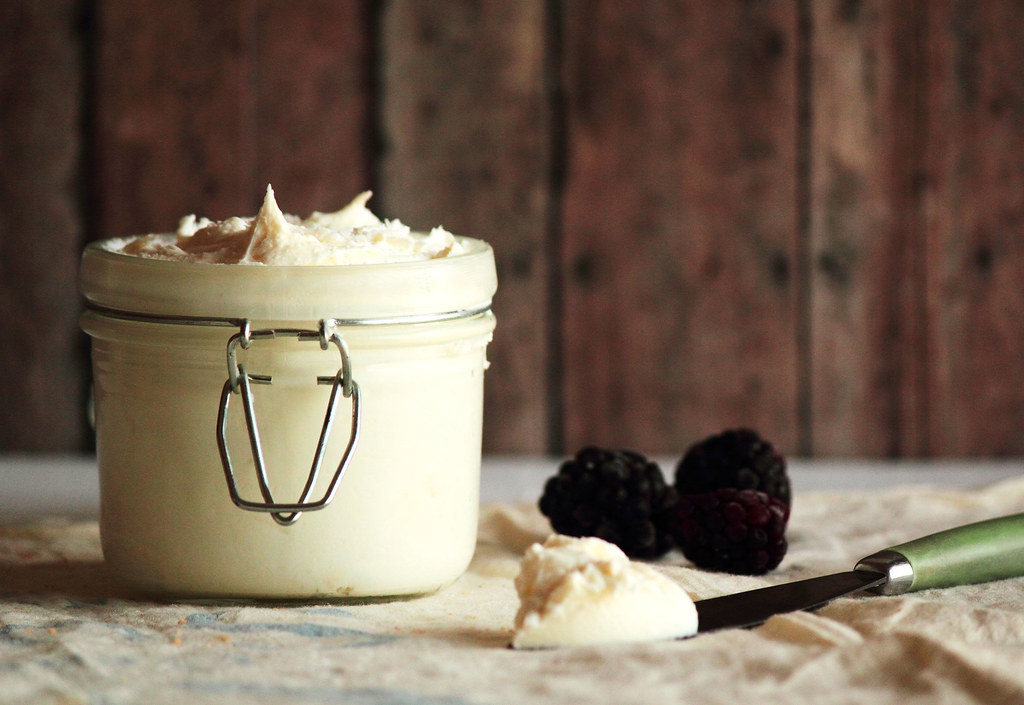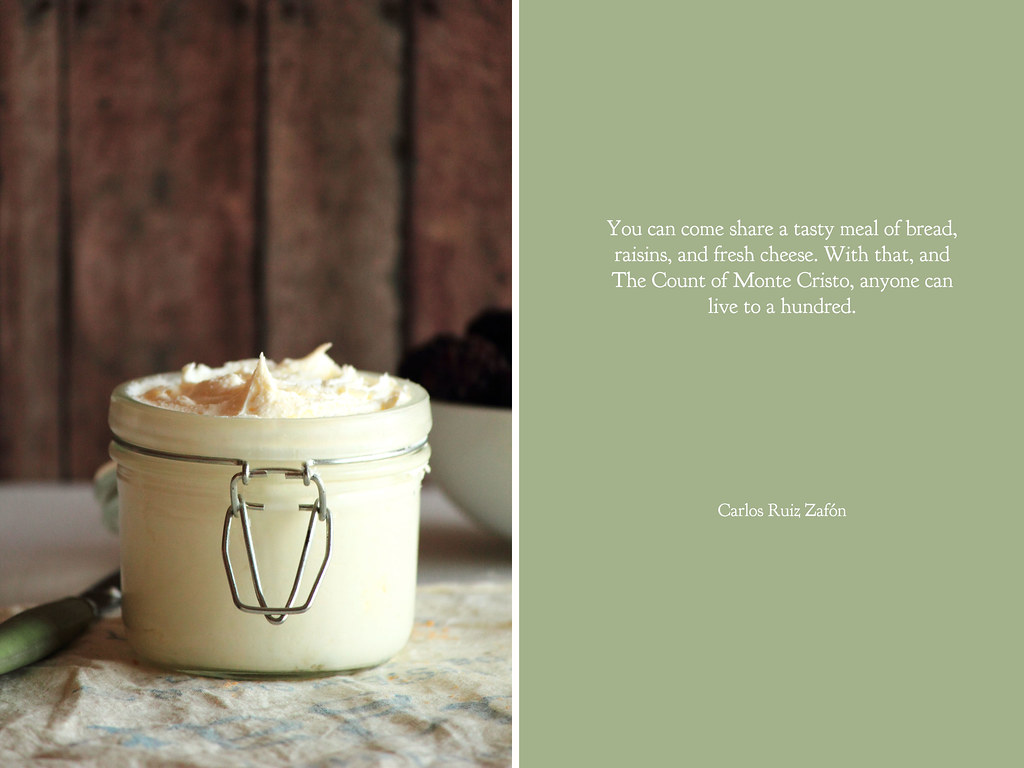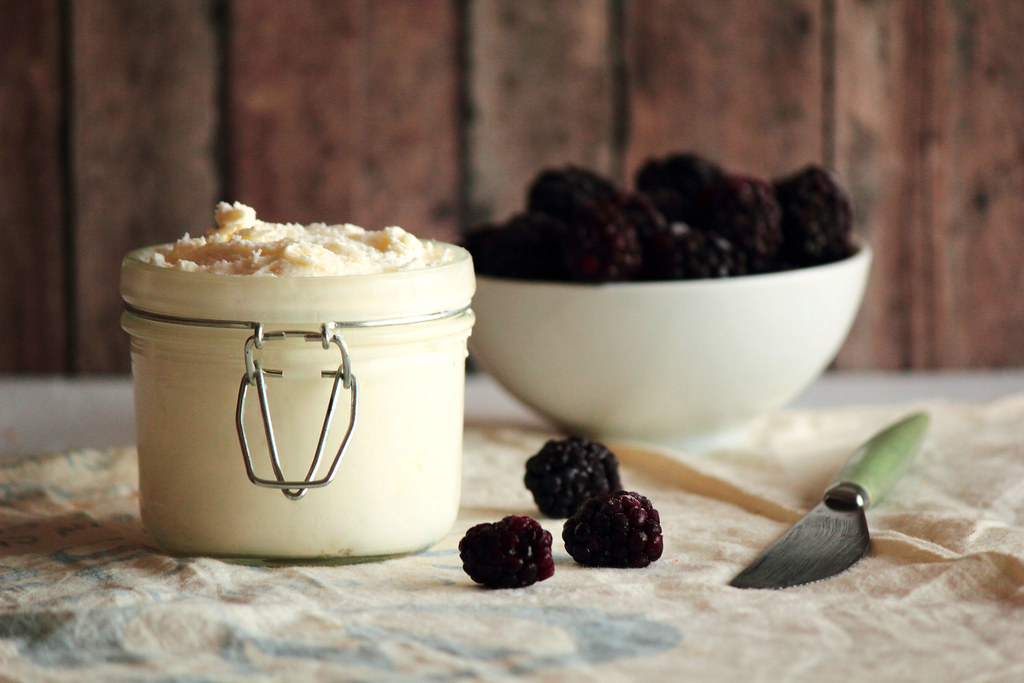Homemade Mascarpone
 04.24.2012
04.24.2012 
I first encountered mascarpone in an Italian chain restaurant. Going out on a limb, I suggested ordering dessert, a feat I only reserve for the most elite occasions. Tiramisu, my friend ordered for us as I nervously propped the dessert menu back on the edge of the table.
I was in the middle of the long stage of my life known only as Afraid to Try New Things, a stage that most certainly applied to food. I knew very little about Tiramisu. In fact, the entire sum of my knowledge about it came solely from the picture on the dessert menu. It was only natural for me to be wary of it, eyeing it like a sworn enemy until it proved itself otherwise. My friend, of course, knew none of the internal conflict brewing at the thought of consuming a dessert that wasn't completely and exclusively chocolate.
The first bite of Tiramisu, however, was bliss. As was the second and third, as I fought to devour the dessert faster than my friend could keep pace.

Once I started baking (and properly eating), mascarpone cheese found its way into some of my most beloved desserts. It was bittersweet, however. Mascarpone was (and is) an incredibly expensive cheese—nearly eight dollars at the local market—so I only used it on very rare occasions, for birthday cakes and holiday sweets.
I wish someone had told me that you could make your own mascarpone cheese years ago. Someone to not only inform me that it was possible to make, but that it was dead simple to do so.
I want to be that someone for you.

Cheese making can certainly sound like an intimidating art form but I'd argue that, in the realm of art, creating mascarpone ranks in difficulty somewhere among drawing stick figures. This cheese only requires ten minutes of active time out of your day. Did I mention it's also cheap to make? A cup and a half of mascarpone cost me precisely two dollars to produce.
Two dollars.
I will never buy a tub of mascarpone at the supermarket again.

Homemade Mascarpone looks and tastes just as the store bought version. It's also quite simple to make, only requiring a couple special tools, and is drastically cheaper to cook up on your own. Mascarpone cheese isn't very good to eat by itself (imagine eating a spoonful of butter), but it is perfect to use as an ingredient for savory and dessert recipes alike. Next time you want to try out a recipe calling for mascarpone cheese, give this recipe a try!
One Year Ago: Snow Cones and Strawberry Milk
Homemade Mascarpone
Adapted from a dozen sources, all using the same ingredients in the same amount
Yields about 1 1/2 cups
2 cups heavy cream, pasteurized (but not ultra-pasteurized)
1 tablespoon lemon juice, freshly squeezed
In a large saucepan, heat heavy cream over medium high heat until a candy thermometer reads 190 degrees F (88 degrees C). The cream should be at a simmer. Be careful not to scorch the bottom! Stir in the lemon juice and continue to heat at 190 degrees F (88 degrees C) for 5 minutes, stirring constantly. The cream should thicken enough to coat the back of a spoon. Remove from heat and allow to cool to room temperature, about 30 to 45 minutes.
Place a strainer lined with 4 layers of cheesecloth (or a few layers of coffee filters) over an empty bowl. Add the cream, cover with plastic wrap, and place in the refrigerator. Allow the cream to strain out for 8-12 hours, preferably overnight. Discard the whey; I only ended up with a couple tablespoons. When finished straining, transfer the cheese to an airtight container and store in the refrigerator.
Use fresh mascarpone cheese within the week.
 cheese,
cheese,  mascarpone in
mascarpone in  chilled
chilled 







Reader Comments (61)
The only problem I had with it is that there was a faint taste of lemon. This isn't a big problem but I'm wondering if I did something wrong? Maybe I let it cool too much before putting over the strainer and not enough whey escaped?
Also, just a little tip-- using organic cream instead of non-organic gives the cheese a different flavor that tastes more like the "real" thing. It's slight, but I definitely can tell the difference and prefer organic.
Thanks for the recipe!
The process used to "Ultra-Pateurize" changes the molecules of the cream so sadly nothing much CAN be made with it--this is simply a way some one came up with the make cream more shelf-stable so they didn;t have to pull it so often. If you are using it in coffee--well--it doesn;t taste the same to me but---Normal Pasturization takes the milk or cream to a certain temp and holds it for a very short time and then cools it. Ultra takes it higher and holds it longer so anything that might make the cream ever spoil--for like a million years!!!!--is killed. This changes everything about it--texture etc.
To find heavy cream that is NOT Ultra--ask your local small town grocer rather than a "Big Box" sorta place--altho some big stores do carry both kinds or will order it for you.
I am pretty sure that SAMS CLUB carries quarts (and maybe smaller) of regular heavy cream. Make more and gift it to a friend!